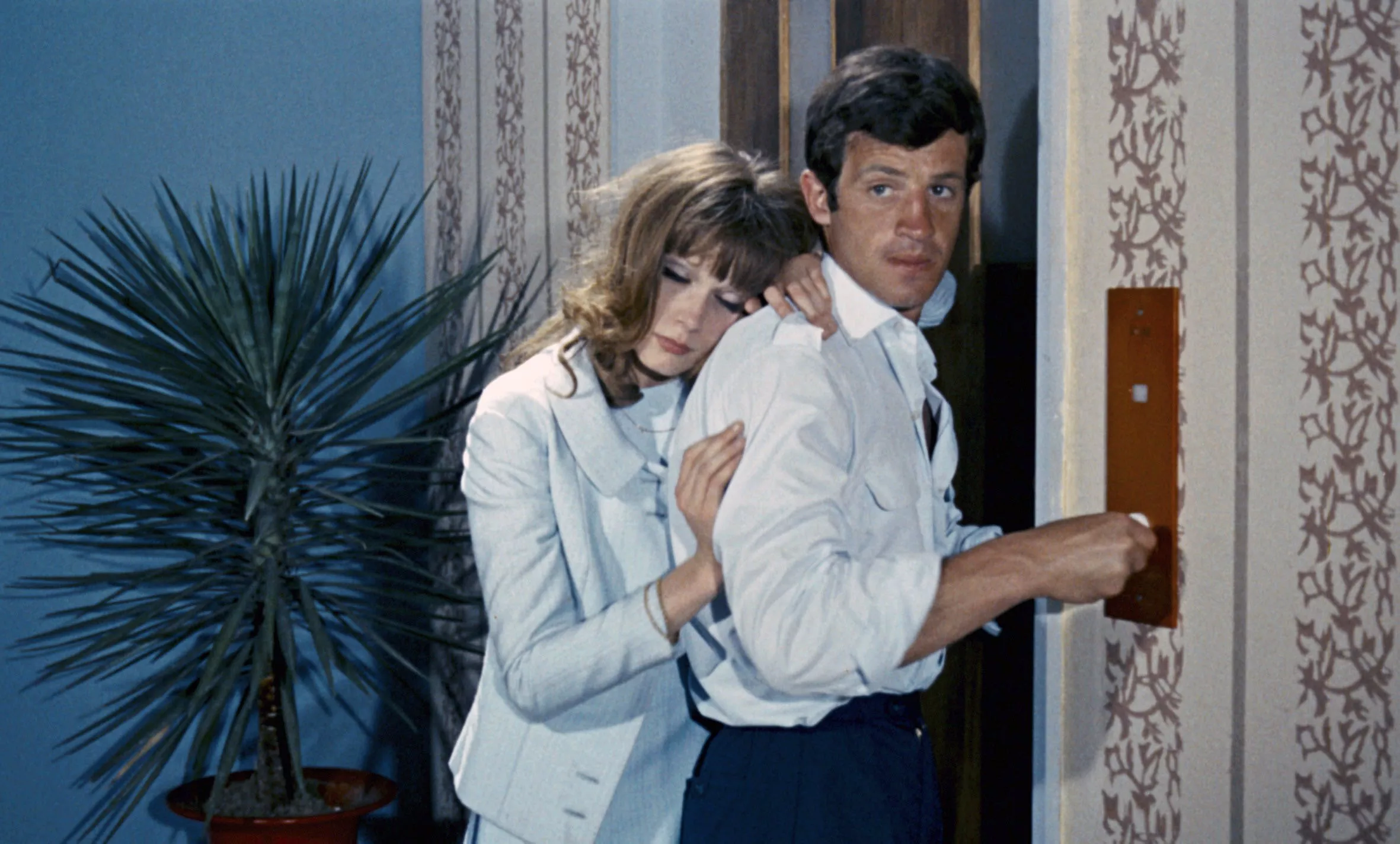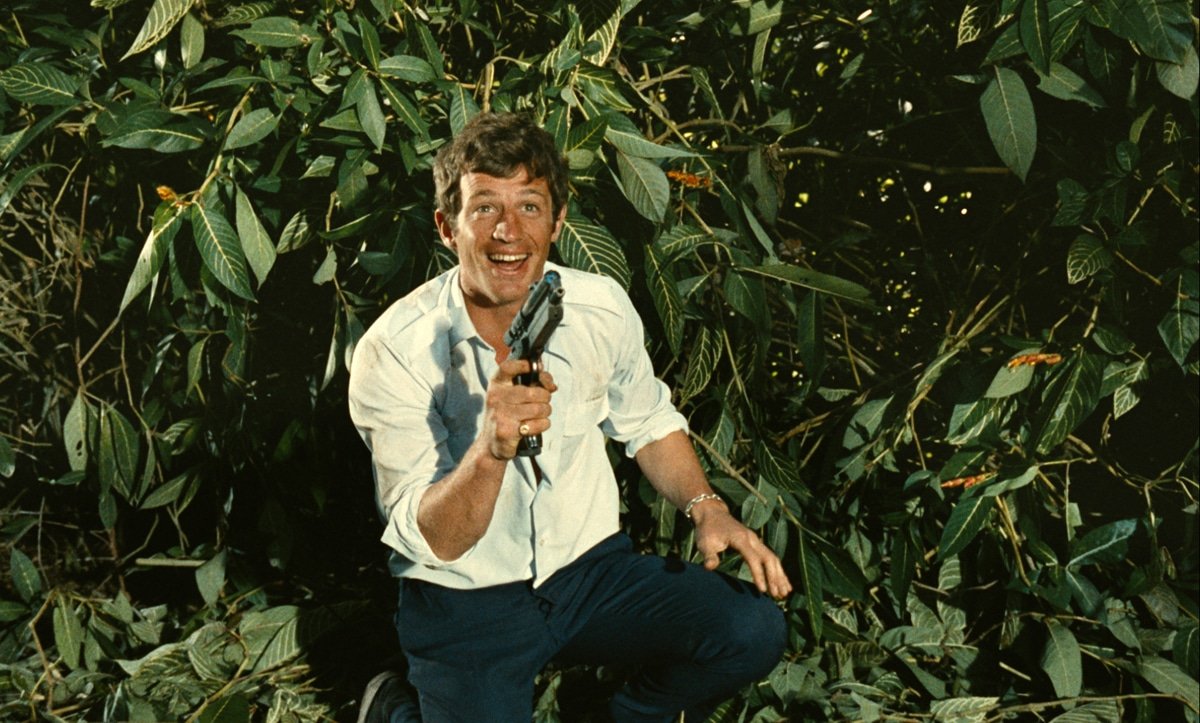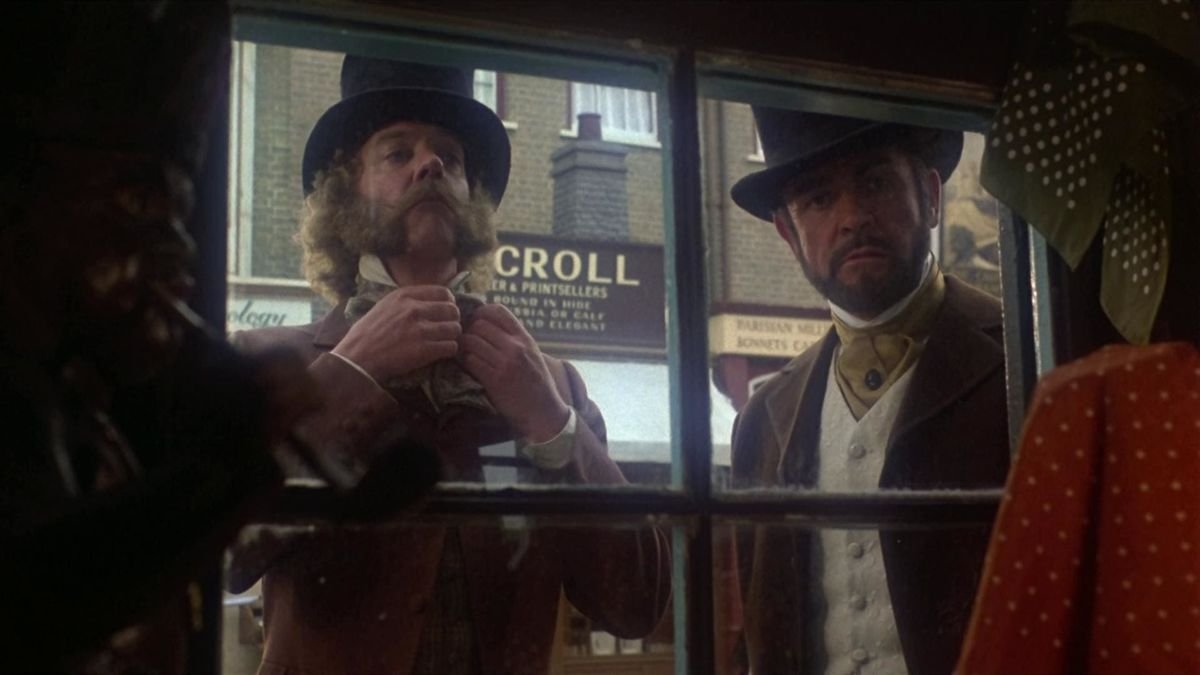Lupintic movies: Six films that are like Lupin the Third
The Lupin III franchise, while taking different elements from literature, TV and cinema, is unlike any other.
Whether you are talking about the manga, the anime, or the theatrical features, there is not anything quite like it. Sure, it takes ideas from Maurice LeBlanc’s original Arsène Lupin tales - but updated in a way that fans of “modern” media can appreciate. It has been updated into many different tones and styles over the years, all while never losing the essence of what makes Lupin, Lupin!
Sure, there are imitators. Dreamwork’s recent animated film The Bad Guys was so close to the Lupin formula that, some may say, it teeters on the edge of plagiarism. Later this year, Tom Cruise’s newest entry in his Mission Impossible franchise features a car chase scene with a yellow Fiat 500 darting around the streets of Venice, a sequence that feels directly lifted from The Castle of Cagliostro. A co-incidence? Maybe - but it all feels a little too on the nose to be anything else but homage.
These tributes are no doubt the true legacy of Lupin III.
For this article, then, let us turn this topic onto its head. It is time to dive into the vaults of history, and look across six movies that are similar to, but not inspired by, our favourite thief. Instead, these films simply feel as if they could fit into the same category as Lupin III. They may not all be bangers, but if you enjoy Lupin, there may well be something here for you in each of these entries.
The films here are but a small sample of what I came across in my search, and I am sure some of you may have your own suggestions (feel free to leave a comment below, and let us know, if you do)!
I hope you enjoy this specially curated “Lupintic” programme and can check out some of my picks for yourselves - you never know, one of these may be a new favourite of yours just waiting to be discovered!
That Man from Rio (Philippe de Broca, 1964)
This French-Italian production follows soldier Adrien Dufourquet (Jean-Paul Belmondo), on a mission in Paris to meet with his fiancée, Agnès de Villermosa (Françoise Dorléac).
The couple is soon entangled in a plot involving stolen Brazilian statuettes, shady characters, and many acrobatics. Belmondo would go on to make most of his own stunts, which would become his trademark throughout his movie career.
The movie is unashamedly inspired by several Tintin stories, and Philippe de Broca was at some point approached to direct the Belgian reporter’s first foray on the big screen. Other sources of inspiration include Hitchcock’s North by Northwest with its unwilling hero getting thrown into action.
While Françoise Dorléac is too much of an ingénue to be compared to Fujiko, and Belmondo is more of an average bloke than a master thief, the film has that breath of adventure and sense of fun that feels right up Lupin’s alley.
Interestingly, this Lupin-like movie predates Lupin the Third itself by three years! This led some fans to speculate that Monkey Punch was somewhat inspired by it. While he never admitted to such influence, at least to my knowledge, there is a case to be made, mainly because of Jean-Paul Belmondo in the lead role.
Belmondo re-defined the male lead, with his laid-back attitude and ironic smirk. Internationally beloved, Belmondo served as the model for Space Adventure Cobra by the late Buichi Terasawa. More recently, a Belmondo exhibit in Japan stated that Belmondo inspired Lupin, too.
In the Japanese dub of The Man from Rio, Belmondo was voiced by none other than Yasuo Yamada, who would define the Lupin role from 1971 to 1994.
Branded to Kill (Seijun Suzuki, 1967)
Coming out the same year as Lupin the Third’s first manga chapter, Branded to Kill marks a turning point for soon-to-be famous director Seijun Suzuki. Previously restricted to traditional Yakuza flicks made for the prestigious Nikkatsu studios, Suzuki breaks the mold by turning a crime thriller into a slapstick farce before delving into the surreal, bordering on Lynchian horror.
Needless to say, the film was a complete disaster at the box office, and Kyusaku Hori, then president of Nikkatsu, would call the film incomprehensible, urging Suzuki to leave cinema altogether. Talk about being ahead of the times!
The plot involves an organization of professional killers competing against each-other in order to become the new number one of the organization. Number 3, Goro Hanada (Joe Shishido), who can only get an erection after getting a good sniff from rice cookers, is hired by the mysterious Misako (Annu Mari) for an impossible mission. But, little does he know, an unassuming butterfly will foil our hero’s well-oiled plan.
Let me be honest… Branded to Kill’s main appeal is not its story. Rather, it is its conscious decision to stray from the narrative as much as possible, only for the story to return right back at the viewer, like a boomerang.
Carried by Joe Shishido and his trademark surgically enhanced cheeks, this film will potentially interest fans of the original Lupin III, manga and also the 1978 film, The Mystery of Mamo (Lupin III VS. The Clone). The comparison with Mamo is not gratuitous, as one of the writers on Branded to Kill was Atsushi Yamatoya, who, believe it or not, went on to write the script of The Mystery of Mamo!
As for Suzuki, he would also end up working on the Lupin III franchise, directing the classic 1985 released feature film, Legend of the Gold of Babylon. Small world, isn’t it?
If you are not afraid of strange films filled with both gags and symbolism, then Branded to Kill might be a good gateway to Suzuki’s filmography.
Danger Diabolik (Mario Bava, 1968)
Lupin is extremely famous in Italy and it’s not hard to see why. In many respects, he resembles some protagonists from Fumetti, the Italian equivalent of comic books. More often than not, the heroes of such Fumetti were criminals, and none of them were as famous as Diabolik.
A flamboyant and fearless burglar with a beautiful assistant. Such a famous licence was bound to jump to the big screen sooner or later, and Mario Bava was hired to direct Diabolik’s first theatrical adventure. While Mario Bava is better known for inventing the Giallo genre, a mixture of thriller, horror and eroticism, he was quite versatile, and uses all his technical experience, as well as his trademark colorful stage lights, to bring this baroque adventure to life.
Diabolik is played by John Philip Law, who you may recognise from Barbarella and The Last Voyage of Sinbad. His chiselled looks and piercing blue eyes are perfect for the role of the wily thief. Oh, yes, I had forgotten to mention that until now. Diabolik mostly lets his actions speak louder than words, and isn’t much of a talker, unlike Lupin!
While a stoic protagonist feels like the polar opposite to the cheeky Lupin, every other detail in Diabolik screams Part 2 vibes. Pursuing him is French actor Michel Piccoli - who worked with everyone from Godard to Bunuel - as inspector Ginko, a very Zenigata-like figure.
Just like Lupin, Diabolik is preying on worse offenders, in this case Mafia boss Ralph Valmont, played by Adolfo Celi, of Thunderball fame.
Between the outrageous plot, the ambitious scope, the gadgets, and Bava’s aesthetics, this film is a generous romp that feels very close to mid-70’s Lupin the Third.
The Brain / Le Cerveau (Gérard Oury, 1969)
Sometimes a movie’s synopsis sounds too silly to be true, even when inspired by a true event - and in this case, the topic is the Glasgow-London train robbery of 1963.
British colonel Carol Mathews (David Niven), secretly a criminal mastermind known as The Brain, plans to steal NATO’s funds during their transfer from London to Brussels. Unmatched in the art of Grand Larceny, our gentleman thief has one weakness: his head becomes to heavy to hold whenever he feels a strong emotion.
Imagine what happens when he falls in love with the sister of an Italian mafioso played by a cartoonish Eli Wallach - yikes, that’s heavy! Meanwhile, French small-time crooks Arthur and Anatole played by Belmondo (again!) and comic legend Bourville get wind of the heist and want to steal the price for themselves.
Needless to say, that complete chaos ensues when these three factions collide. Talk about “fusion cuisine”!
The film was shot in France, England, Italy and the USA, with ambitious set pieces including the legendary cruise ship France, as well as a thirteen meters high replica of the Statue of Liberty (and the most astonishing thing is that, it works)! It is said that all of this was no walk in the park, as the shooting was delayed by the events of May 68, when a period of civil unrest occurred throughout France.
French director Gérard Oury had experience in screwball comedy mixed with action, and while this is no high art in any definition of the word, it is still extremely entertaining - one to watch!
Red Sun (Terence Young, 1971)
Like the previous entry, the Lupintic quality of the film stems from the mixing of different aesthetics and actors. Here, we have American actor Charles Bronson facing the very French Alain Delon, along with the Japanese icon, Toshiro Mifune.
Swiss actress Ursula Andress of Dr No fame tags along, which is fitting, as Terence Young also directed the first 007 James Bond movie. Such a cast would be enough to make any cinephile water their mouths. While the actors play off each other well, this might be the lesser entry in our little selection.
The film is a Western through and through, with all the qualities and flaws of the genre. The music by French composer Maurice Jarre is serviceable, as is Young’s rather practical direction. However, the treatment of Native tribes and women would certainly shock our modern-day audience. Ursula, as Christina, does not appear until the midpoint of the film, and has a rather thankless role reminiscent of Willie in Temple of Doom. Her two-timing ways, however, are quite reminiscent of our very own Fujiko’s.
The character dynamic of amoral scumbags forced into shaky alliances leads to some pretty entertaining shenanigans. The only truly noble protagonist is of course Kuroda, played by Toshiro Mifune. While the movie plays a lot on the cultural clash between American bandits and Japanese warriors, the movie never fails to treat Mifune and the heritage he embodies with respect.
In comparison, our Western stars show how the United States truly stand for: greed. It might sound too serious to be a truly “Lupintic” movie, but I couldn’t help but think of the tensions between Jigen, Lupin and Goemon whenever their philosophies clash. Charles Bronson as Link provides some genuine laughs, with slapsticks worthy of the monkey-faced thief. Delon as Gauche remains on the backseat for most of the film, but each of his scenes showcase the suave yet venomous presence of a cobra, like some of the best Lupin III antagonists.
Do not expect a hidden gem, but rather an OK flick with some moments of genuine quality here and there.
The Great Train Robbery (Michael Crichton, 1978)
After the bumpy ride that is Red Sun, I now welcome you all aboard the palate cleanser. We have seen how a 007 James Bond director would direct a Lupin style film in this article already, but what if James Bond himself was playing Lupin?
Our last entry is basically that, with Sean Connery playing Edward Pierce, an ambitious thief planning on stealing the Crimean Gold onboard the Folkestone Train. He is aided by his paramour Miriam (Lesley-Anne Down), possibly the best Fujiko equivalent of this selection, and master pickpocket Agar (Donald Sutherland).
After The Brain, you might think a second train robbery-based heist movie to be repetitive, but this is a very different film from Oury’s comedy.
The movie takes place in 1855 London, so lovers of period pieces will get their fill of dapper clothes, foggy streets filled with cobblestones, and a myriad of stiff upper lipped fops being bested by our dashing rogues.
The movie feels like a forgotten Maurice Leblanc novel, but the funny antics, gags, and thinly veiled innuendos throughout can remind you of some episodes of the red jacket series.
The movie is also very impressive on a technical level, with train stunts that will make you fear for the actor’s life! Michael Crichton is better remembered for his novels (and questionable opinions on Climate Change… but that’s another topic), but he was also a competent director and script writer.
You might remember the seminal West World, or the innovative Looker. Here, Crichton adapts his own 1975 novel with great effect, using real world events (like the Crimean War) to enrich the narrative. Crichton touches upon class discrepancies without turning the film into a pamphlet. It is more than enough to see our protagonists praying on the rich - a fun time for all.
While the characters are quite amoral, they are all disarmingly charismatic, and just like we love seeing Lupin get away with his crimes, we root for Pierce and his gang to steal the gold and run off. With their carriage fading in the sepia toned horizon, accompanied by Jerry Goldsmith’s excellent score, this is a “Lupintic” film worth seeking out!
That is all for me this time, Lupintic folks! I hope you enjoyed my small movie selection and I hope to have broadened your horizons, if only slightly. Cinema is a vast land of possibilities, and I can only invite you to stay curious about what to watch.
Whether it’s by buying physical media, roaming streaming services, or going to theatres, they are many ways to enjoy classic cinema. In a time where Hollywood executives refuse to listen to reason, forcing their employees on a prolonged strike, celebrating cinema is now is more important than ever - and if our love for an animated gentleman thief can help, I’ll consider my mission fulfilled.
Until next time, friends, where I hope to explain why John McTiernan would have been the best to direct a Hollywood produced Lupin feature in the 80s, it’s goodbye for now - and I hope you have a fun movie night!


































